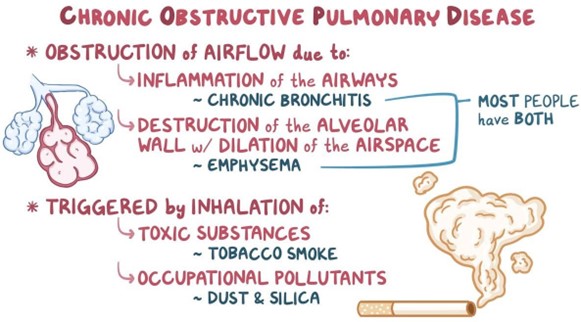The nurse is caring for a client admitted with an acute exacerbation of chronic obstructive pulmonary disease (COPD) who reports a pounding headache. Which action should the nurse take?
Elevate head of bed no higher than 30 degrees.
Affirm blood glucose is below 160 mg/dL (8.88 mmol/L)
Check for a stat intravenous diuretic prescription.
Obtain a manual blood pressure measurement.
The Correct Answer is D
A pounding headache in a client with COPD may be a symptom of increased carbon dioxide (CO2) levels in the blood, known as hypercapnia. Hypercapnia can lead to vasodilation, resulting in headaches. In this situation, it is crucial to assess the client's blood pressure to determine if it is elevated, as this could be contributing to the headache.
Obtaining a manual blood pressure measurement allows for a more accurate assessment of the client's blood pressure compared to automated measurements. It is important to assess both systolic and diastolic blood pressures, as elevated blood pressure can worsen headaches and have other negative effects on the client's health.
Elevating the head of the bed no higher than 30 degrees is a general measure used to improve respiratory function in clients with COPD. However, in this specific situation, it may not directly address the pounding headache. Elevating the head of the bed can help reduce dyspnea and improve oxygenation, but it may not alleviate the headache caused by hypercapnia.
Affirming blood glucose levels are below 160 mg/dL (8.88 mmol/L) is not the primary concern in this case. While high blood glucose levels can have various effects on the body, including headaches, the priority is to assess the client's blood pressure due to the specific context of a COPD exacerbation.
Checking for a stat intravenous diuretic prescription is not necessary in response to the client's headache. Diuretics are typically used to remove excess fluid from the body and may not directly address the underlying cause of the headache in this situation.

Nursing Test Bank
Naxlex Comprehensive Predictor Exams
Related Questions
Correct Answer is D
Explanation
The ability to effectively communicate and provide accurate information can be impacted by external factors such as noise, distractions, or an unfamiliar environment. By assessing the surroundings, the nurse can identify and address any potential barriers to communication.
Once the nurse has addressed any environmental factors that may be hindering communication, they can proceed with other strategies to facilitate the health history assessment. This may include providing a printed healthcare assessment form to assist the client in organizing their thoughts or deferring the assessment until the client is less anxious.
Asking the family member to answer the questions should be considered if the client is unable to provide accurate information or is cognitively impaired. However, it is important to first address any environmental factors and attempt to engage the client directly in the assessment process.
Correct Answer is A
Explanation
A) Correct- Hematocrit values below the reference range during pregnancy could indicate anemia, which requires further evaluation and intervention. The other findings can be attributed to normal physiological changes during pregnancy (elevated total T4, heart rate increase) or can be common findings (systolic murmur).
B) Incorrect - A heart rate of 92 beats per minute is within the normal range for pregnancy due to increased blood volume and hormonal changes.
C) Incorrect - A systolic murmur can be a common finding during pregnancy due to increased cardiac output.
D) Incorrect - An elevated total T4 can be a normal finding during pregnancy due to hormonal changes.
Whether you are a student looking to ace your exams or a practicing nurse seeking to enhance your expertise , our nursing education contents will empower you with the confidence and competence to make a difference in the lives of patients and become a respected leader in the healthcare field.
Visit Naxlex, invest in your future and unlock endless possibilities with our unparalleled nursing education contents today
Report Wrong Answer on the Current Question
Do you disagree with the answer? If yes, what is your expected answer? Explain.
Kindly be descriptive with the issue you are facing.
